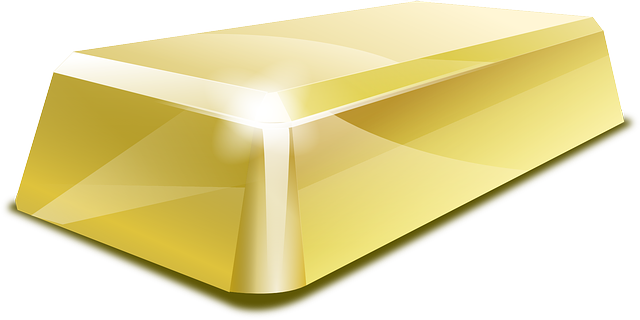To invest in gold or other precious metals within a traditional IRA, one must establish a self-directed IRA and select an IRS-approved trustee/custodian along with an approved depository for storage. These entities ensure compliance with regulations while managing and safeguarding the investments. Investors should be aware of contribution limits, reporting requirements, and prohibited transaction rules to maintain the tax-advantaged status of their retirement savings. The process involves a trustee-to-trustee transfer, selection of a reputable custodian knowledgeable in IRS regulations, and purchasing gold that meets IRS standards for purity and storage. It's crucial to choose financial professionals who are experts in precious metals with a solid reputation, transparent fee structures, and strong security measures. Investors must also select from IRS-approved bullion coins like the American Gold Eagle, Canadian Gold Maple Leaf, or Austrian Gold Philharmonic, aligning their choice with their investment strategy and risk tolerance. Consulting with financial advisors and tax professionals is recommended to ensure compliance with IRS rules and to understand the tax implications of gold appreciation upon withdrawal. Legal frameworks like the Pension Protection Act of 2006 and the Patriot Act mandate strict reporting, record-keeping, and adherence to prohibited transaction rules for a compliant gold IRA investment.
Exploring the transformation of a traditional IRA into a golden retirement nest egg, our article illuminates the pathway to incorporating the timeless asset of gold within your self-directed IRA framework. We delve into the nuances of setting up this unique investment vehicle, guiding you through each step from selection of a compliant custodian to the strategic choice of gold bullion or coins that meet IRS standards. With a focus on the intricacies of compliance, tax implications, and legal considerations, this article is your compass in navigating the complex terrain of gold IRAs.
- Understanding Self-Directed IRAs for Precious Metals
- Steps to Convert Traditional IRA to Gold
- Selecting a Trustee and Custodian for Your Gold IRA
- Choosing the Right Type of Gold for Your IRA Investment
- Compliance, Tax Considerations, and Legal Aspects of Gold IRAs
Understanding Self-Directed IRAs for Precious Metals

When considering the conversion of a traditional IRA to one that includes investments in gold and other precious metals, it’s crucial to familiarize oneself with self-directed IRAs. These specialized accounts afford investors the opportunity to diversify their retirement portfolios beyond conventional stocks, bonds, and mutual funds. A self-directed IRA for precious metals allows for the purchase and holding of physical gold, silver, platinum, and palladium coins or bars that meet specific fineness or purity requirements as defined by the Internal Revenue Service (IRS).
To initiate this process, one must first select a trustee or custodian that specializes in self-directed IRAs and is approved by the IRS to hold these types of assets. This entity will be responsible for safeguarding the investments within the IRA and ensuring they comply with IRS regulations. Investors then choose the precious metals they wish to acquire, keeping in mind that the metals must be stored in a depository approved for IRA purposes. It’s imperative to conduct thorough due diligence when selecting both the custodian and the depository, as they play pivotal roles in maintaining the integrity and compliance of your investment within the tax-advantaged framework of an IRA. Additionally, investors must adhere to contribution limits, reporting requirements, and prohibited transaction rules to maintain the tax-deferred or tax-exempt status of their retirement savings. Understanding these mechanisms is key for those looking to incorporate physical precious metals into their retirement strategy.
Steps to Convert Traditional IRA to Gold

To initiate the process of converting a traditional IRA to gold, the first step is to identify a trustee-to-trustee transfer that specializes in precious metals. This type of self-directed IRA will enable you to hold physical gold as part of your retirement savings. Research and select a reputable custodian who is experienced in handling such transactions and adheres to the IRS regulations. Once you’ve established a relationship with a qualified custodian, they will guide you through the necessary forms and documentation required for the transfer. Ensure that all funds from your traditional IRA are transferred directly to the new self-directed IRA custodian; this is crucial to maintain compliance with IRS rules. After the transfer is complete, your custodian will facilitate the purchase of eligible gold products. The IRS stipulates specific purity and storage standards for IRA-eligible gold, so it’s imperative to acquire gold that meets these criteria. Your custodian can provide guidance on which types of gold coins or bullion are permissible for your IRA. Upon completion of the purchase, your custodian will securely store the gold in an IRS-approved depository, ensuring that you remain in compliance with all regulations while benefiting from the potential growth of gold within your retirement portfolio.
Selecting a Trustee and Custodian for Your Gold IRA

When considering the conversion of your traditional IRA to a gold IRA, one of the critical steps is selecting a trustworthy trustee and custodian who specialize in handling precious metals. The trustee, often the entity that owns the assets within your IRA, must be approved by the IRS to hold a self-directed IRA. This trustee will administer the IRA according to your instructions, and as such, they should have expertise in gold IRAs to navigate the specific regulations and tax considerations involved. The custodian, on the other hand, is the entity that holds your physical assets securely. They must be a bank, trust company, or a savings and loan association that meets IRS requirements and maintains the metals in an appropriate depository. It’s imperative to choose a custodian with a solid reputation for safeguarding these investments, as they will ensure the integrity and safety of your gold holdings. Both the trustee and custodian should offer transparent fee structures, excellent customer service, and robust security measures to protect your investment in compliance with IRS rules. Carefully vet potential trustees and custodians to ensure their experience and services align with your needs for a successful gold IRA investment strategy.
Choosing the Right Type of Gold for Your IRA Investment

When considering the conversion of your traditional Individual Retirement Account (IRA) to gold, it is crucial to select the appropriate type of gold that aligns with your investment goals and the rules governing self-directed IRAs. Among the options for IRA-eligible gold are American Gold Eagles, Canadian Gold Maple Leafs, and Austrian Gold Philharmonics, all of which are recognized by the Internal Revenue Service (IRS) as acceptable forms of investment gold. These bullion coins not only comply with IRS standards but also offer liquidity and marketability should you choose to sell them in the future.
The choice between these coins often comes down to factors such as purity, premium over spot price, design, and personal preference. For instance, American Gold Eagles are 22-karat gold (91.67% pure), with a small “Liberty” motif on one side and an eagle on the reverse. They carry a modest premium and are well-known in the market. In contrast, Canadian Gold Maple Leafs are 24-karat gold (99.99% pure) and feature a sugar maple leaf on the front and the profile of Queen Elizabeth II on the back. Austrian Gold Philharmonics are also 24-karat gold and depict various musical instruments, reflecting the cultural heritage of Austria. Each has its own allure and should be carefully considered based on your investment strategy and risk tolerance. It’s important to conduct thorough research or consult with a financial advisor specializing in precious metals IRAs to ensure that the gold you select fits within the regulatory framework of your IRA and supports your long-term financial objectives.
Compliance, Tax Considerations, and Legal Aspects of Gold IRAs

When considering the conversion of a traditional IRA to a gold IRA, adherence to compliance with Internal Revenue Service (IRS) regulations is paramount. The IRS stipulates specific rules for self-directed IRAs, particularly those that invest in precious metals. These rules dictate what types of metals are permissible, how they must be stored and protected, and the procedures for purchasing and adding these assets to your retirement account. Investors must work with IRS-approved custodians who specialize in these types of accounts to ensure all compliance standards are met.
Tax considerations also play a significant role in the utilization of gold within an IRA framework. While the initial conversion from a traditional IRA to a gold IRA may not trigger immediate tax liabilities, the gains from the appreciation of gold within the IRA can have tax implications upon withdrawal, depending on the type of IRA and the tax laws at the time of distribution. Roth IRAs offer tax-free growth, whereas traditional IRAs defer taxes until retirement. It is crucial to consult with a tax professional to understand the potential tax consequences and how they align with your overall financial strategy. Additionally, legal aspects such as the Pension Protection Act of 2006 and the Patriot Act have specific provisions that impact how these investments are handled and reported. These laws enforce strict reporting and record-keeping requirements, as well as prohibited transaction rules to safeguard the integrity of the IRA investment environment. Investors must remain informed and compliant with these regulations to avoid penalties and ensure their gold IRA remains a valid retirement investment option.
In conclusion, transitioning a traditional IRA into a gold-backed investment is a strategic move that can diversify your retirement portfolio. By establishing a self-directed IRA with a focus on precious metals, you gain the opportunity to invest in a tangible asset that has historically maintained value. The process involves careful selection of a trustworthy custodian and understanding the legal and tax implications of such an investment. When executed properly, a gold IRA can be a secure component of your retirement savings strategy, offering potential protection against inflation and market volatility. It is advisable to thoroughly research and consult with financial experts before making this transition to ensure alignment with your long-term financial goals.
